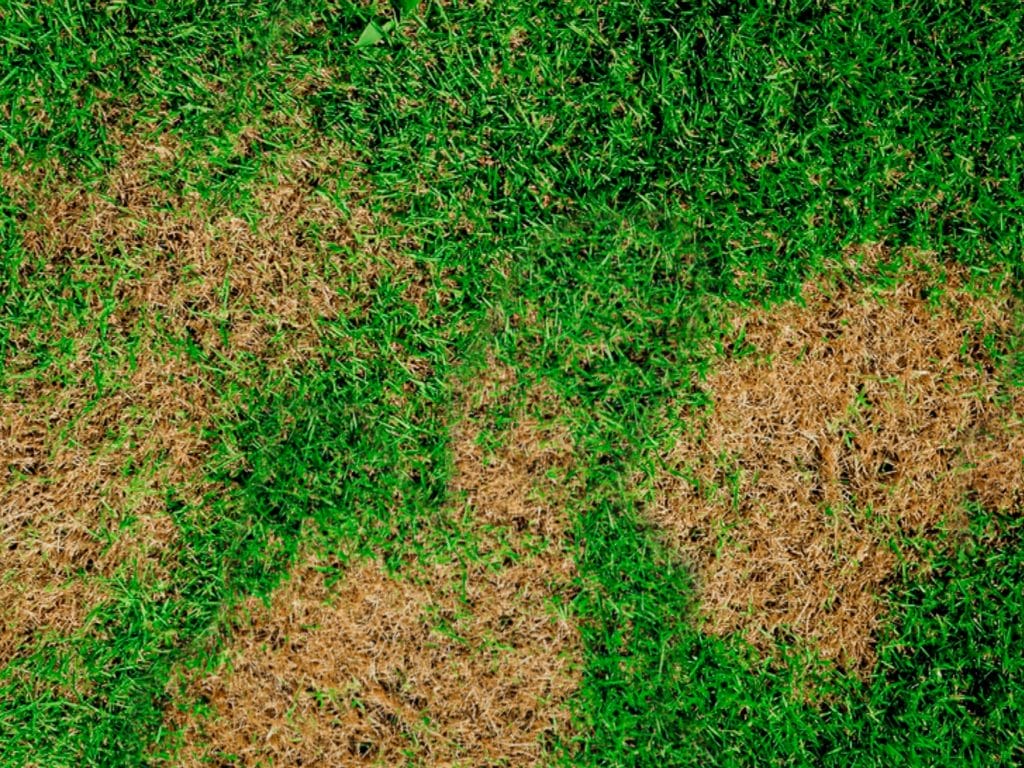Brown Spots on a Lawn: Simple methods to get rid of them
Many gardeners experience the same problem: the growth of brown spots, which detracts from the attractive green color of their grass. There are various causes for these spots to form. Fungi, poor environmental conditions, poor maintenance, and insects are the major causes of brown spot problems. In this post, we’ll help you identify the source of the issue and suggest a simple fix that will restore your grass to its former splendor.
Fertilizers and chemicals
Not all brown spots on your lawn are brought on by fungus. They may also result from the improper use of fertilizer or any other chemical substance. Unevenly applied fertilizer may cause stains or burn your grass. When fertilizer is applied excessively, the salts in it restrict a plant’s ability to absorb water.
Furthermore, the intensity of the sunshine in the middle of the day may cause yellow or brown spots on your grass. If the fertilizer does not penetrate deeply enough, your grass will suffer and burn.
Likewise, substances like motor oil or gasoline may have a comparable impact. A delicate ground might be harmed by only one drop. If any of the explanations listed above help to explain the stains on your lawn, reseeding can be a simple solution to your problem.
Fungal
Fungi may produce patches of varying shades, including yellow, brown, and white. They spread mostly during periods of frost, heat, or when the temperature is humid for an extended length of time. You can only guess what kind of fungus you are dealing with without a proper examination.
Here are some of the most common:
- Grey/white spots: pink snow mold (Monographella nivalis), powdery mildew (Blumeria graminis)
- Yellow spots: dollar spot (Sclerotinia homoeocarpa), scald footrot (Ophiobolus graminis)
- Brown spots: red thread (Laetisaria fuciformis)
The simplest approach to confirm a diagnosis is to contact your local Cooperative Extension office. Suggest sending them a picture or bringing in a sample of the grass blades.
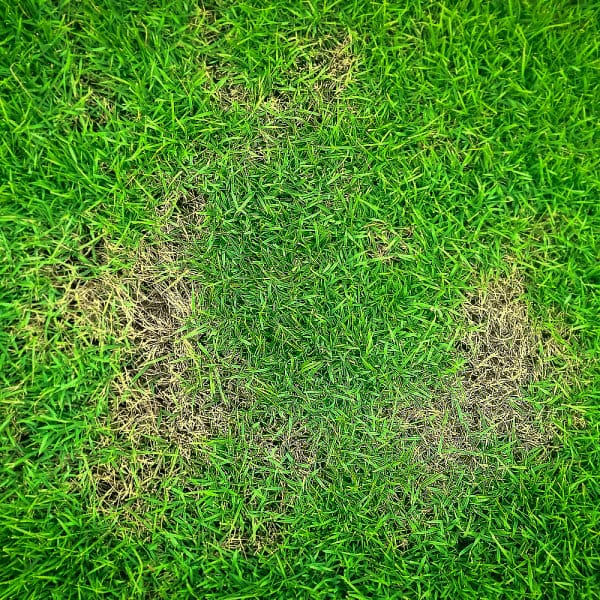
Incorrect mowing techniques
If you mow too short, chop off more than one-third of the blade at a time, or use a dull mower blade, your lawn may be more prone to disease and brown spots may appear.
To solve this problem, mow at the maximum suggested height for your grass type. Limit the amount of grass you mow to a third of the blade, and sharpen your blade two to three times a year. If your growing season is exceptionally long, you’ll need to sharpen it more frequently.
When you finish mowing, pay close attention to the grass blades to determine when to sharpen the blades. If the blades have a clean-cut, you’re good. If the edge is ragged, it’s time to sharpen your blades.

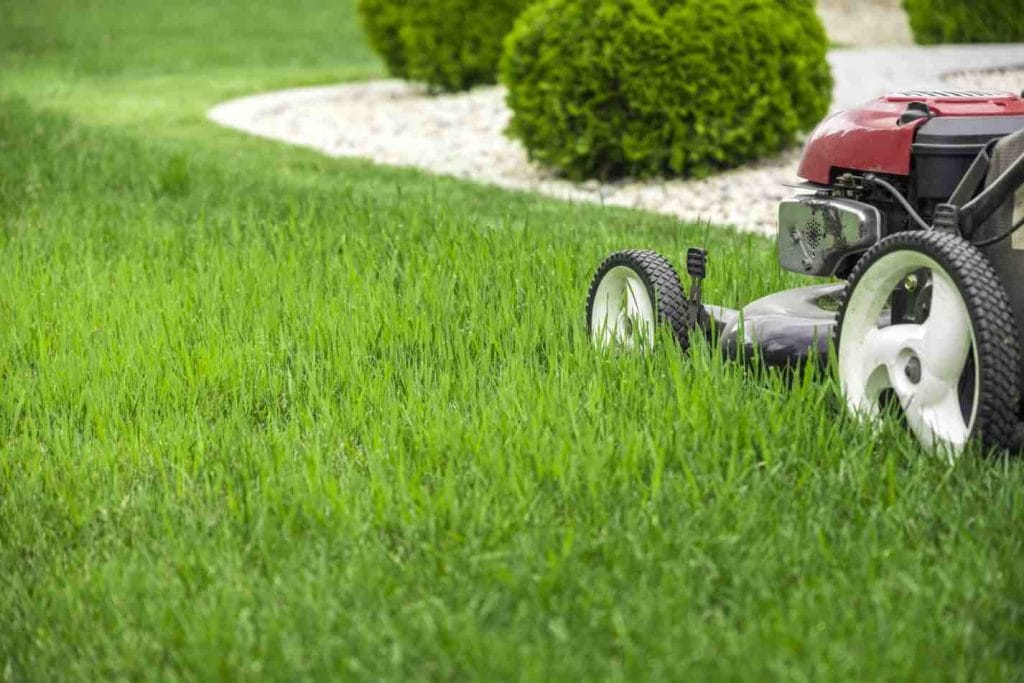
Compacted soil or too much thatch
Water and air flow are negatively impacted by compacted soil. Because of the inability of grassroots to develop as deeply and the poor drainage of water, the root system may get affected, and brown spots may appear.
Thatch is a coating of substance that exists between the live grass and the soil. Anything less than around a half-inch is fine, but anything higher might harm the lawn. It hides the roots from moisture and nutrients and can also serve as a breeding ground for insects and fungus.
To fix this problem, aerate the grass once a year and dethatch it when the thatch buildup reaches one-half to three-fourths of an inch. Both of these types of equipment are typically rented at local home improvement rental stores.
Drought
A grass that turns yellow is usually one that needs water. If your location is experiencing a drought or has local irrigation limitations, your grass may turn brown if it stays dormant. Although your lawn may give the impression that it has dead grass, only severe weather conditions may cause the entire lawn to die.
As soon as the temperature rises, water the grass with a thin mist of water in the morning or the evening when the ground is not yet exposed to the sun’s rays.
As soon as the temperature rises, water the grass with a thin mist of water in the morning or the evening when the ground is not yet exposed to the sun’s rays.
In general, water plants once a week at a depth of 1/4 inch or twice a week at a depth of 1/2 inch. In times of drought, consult the Cooperative Extension office in your state for local watering recommendations.
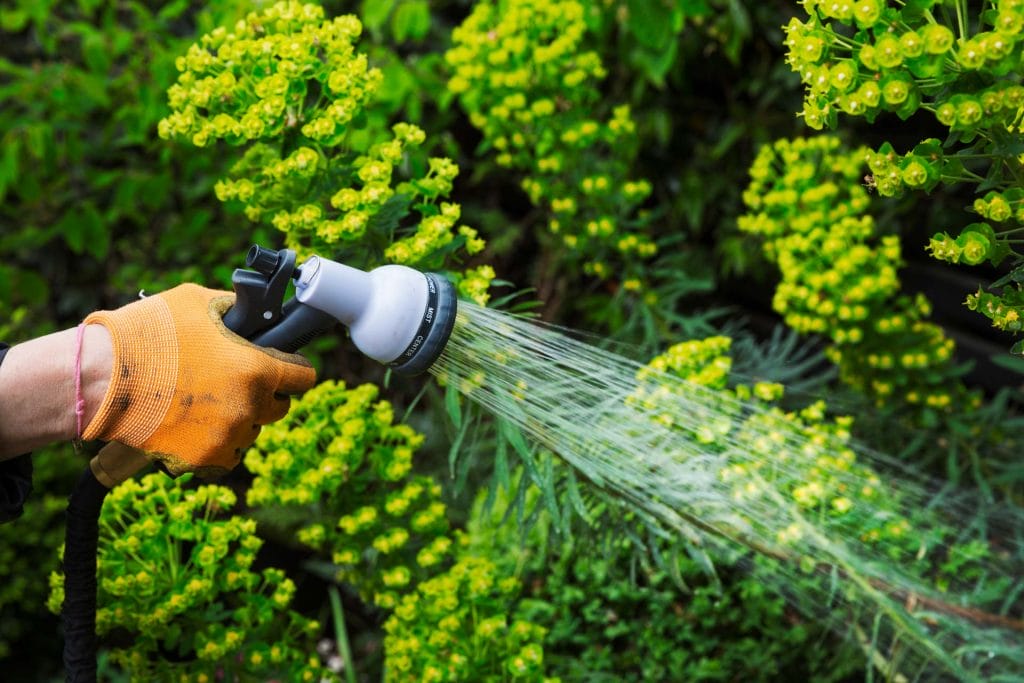
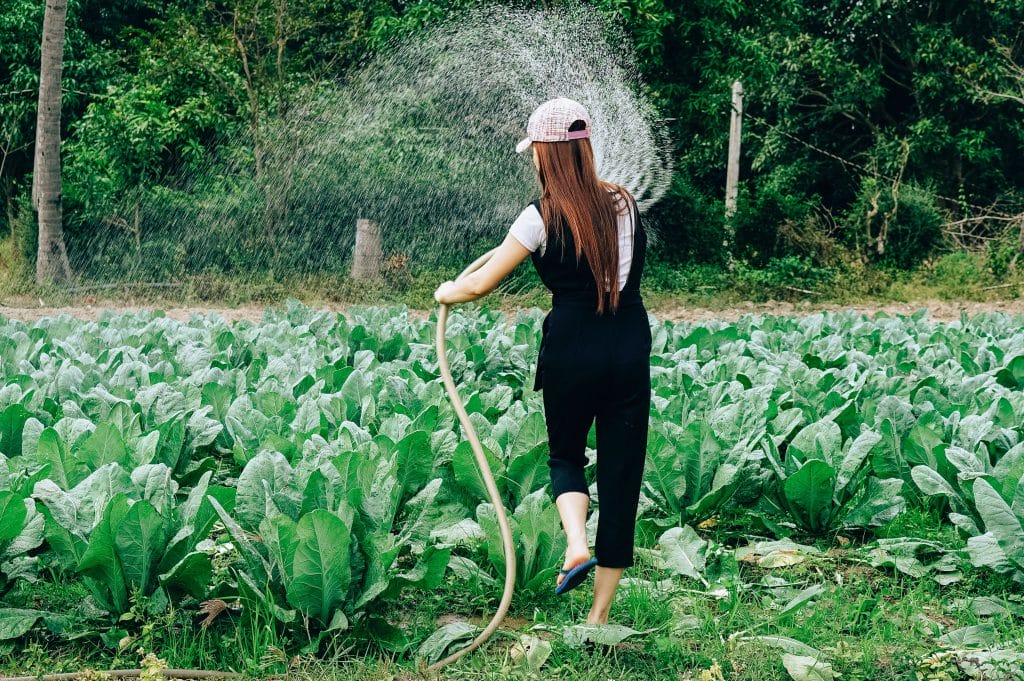
Pets
Dog urine is another often cited cause of discoloration on lawns. Dog owners are well aware of this issue since they frequently see yellow spots all over their gardens.
Due to its nitrogen concentration and other substances that may change the soil’s pH and result in its unpleasant halo effects in the garden, dog urine can cause yellow or brown stains on your grass.
Use the hose to spread the nitrogen in the soil to fix this problem once the dog has urinated. Aside from that, you may want to reduce the nitrogen in your regular fertilizer schedule.
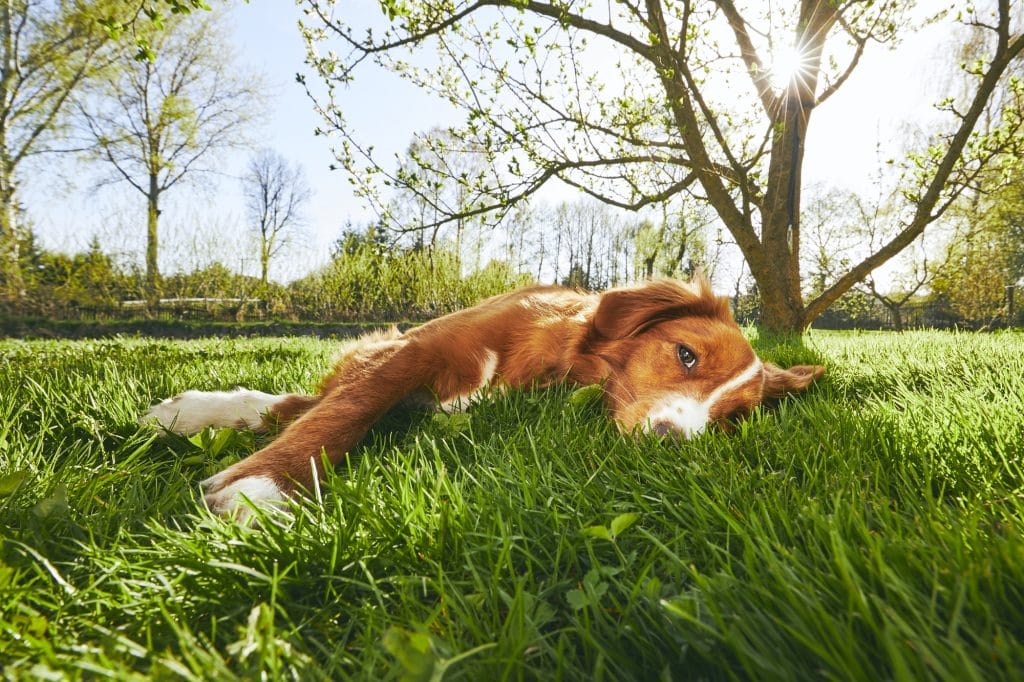
Invest in the health of your lush, green lawn.
Unattractive colored spots harm your grass and need to be removed if you want to restore your lush, green lawn.
Protecting your grass from damage may be challenging, especially during times of intense weather. Consider hiring a lawn care professional to accurately detect and cure your lawn’s brown spots.
We can help you
Our Services

Get an estimate
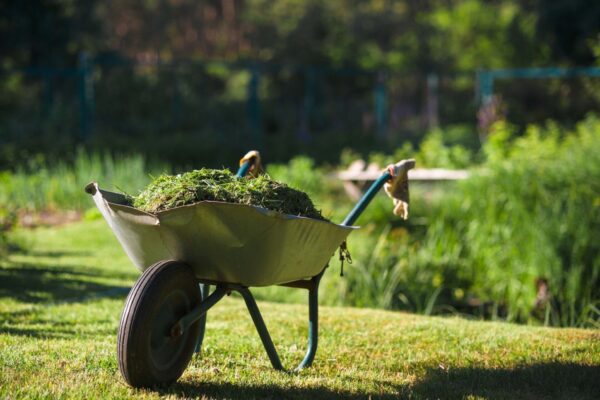
Lawn Care
Innovation Grounds Lawn Care Services offers routine yard mowing for your Austin, Texas home or property.
Our grass cutting service includes edging along concrete surfaces and walk paths, flowerbeds and trimming the perimeter of the lawn and removing debris from the clippings. Get in touch today and let us keep your yard looking great!

